Serving 710 students in grades 9-12, Bandera High School ranks in the bottom 50% of all schools in Texas for overall test scores (math proficiency is bottom 50%, and reading proficiency is bottom 50%).
The percentage of students achieving proficiency in math is 15% (which is lower than the Texas state average of 41%). The percentage of students achieving proficiency in reading/language arts is 37% (which is lower than the Texas state average of 51%).
The student:teacher ratio of 16:1 is higher than the Texas state level of 14:1.
Minority enrollment is 40% of the student body (majority Hispanic), which is lower than the Texas state average of 75% (majority Hispanic).
Quick Stats (2025)
- Grades: 9-12
- Enrollment: 710 students
- Student:Teacher Ratio: 16:1
- Minority Enrollment: 40%
- Graduation Rate: 85-89% (Btm 50% in TX)
- Overall Testing Rank: Bottom 50%
- Math Proficiency: 15% (Btm 50%)
- Reading Proficiency: 37% (Btm 50%)
- Science Proficiency: 40% (Btm 50%)
- Source: National Center for Education Statistics (NCES), TX Dept. of Education
School Overview
Bandera High School's student population of 710 students has grown by 10% over five school years.
The teacher population of 45 teachers has declined by 8% over five school years.
Grades Offered
Grades 9-12
Total Students
710 students
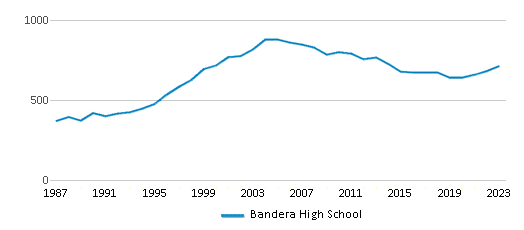
Gender %
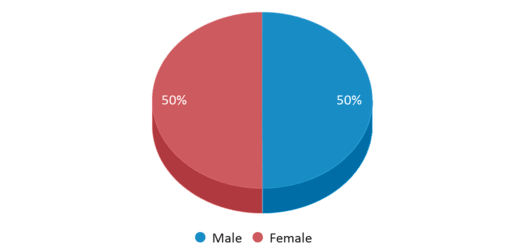
Total Classroom Teachers
45 teachers
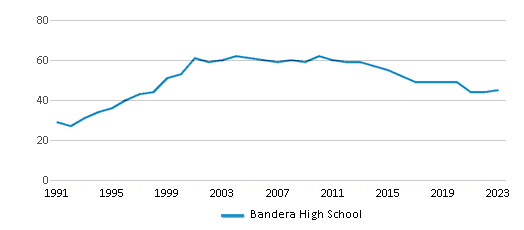
Students by Grade
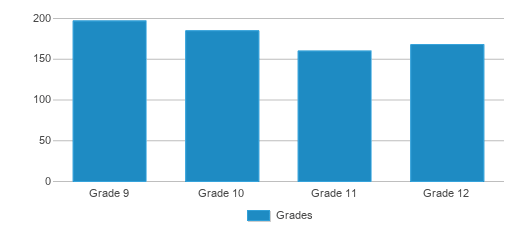
School Rankings
Bandera High School ranks within the bottom 50% of all 8,188 schools in Texas (based off of combined math and reading proficiency testing data).
The diversity score of Bandera High School is 0.51, which is less than the diversity score at state average of 0.64. The school's diversity has stayed relatively flat over five school years.
Overall Testing Rank
#7319 out of 8188 schools
(Bottom 50%)
(Bottom 50%)
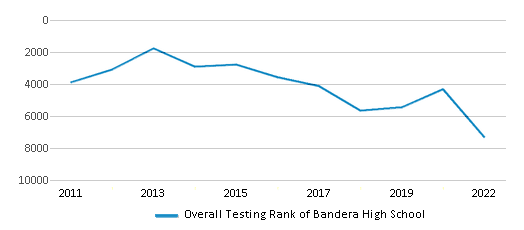
Math Test Scores (% Proficient)
15%
41%
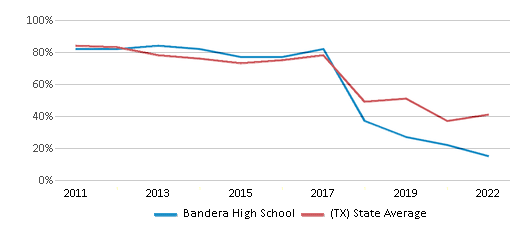
Reading/Language Arts Test Scores (% Proficient)
37%
51%
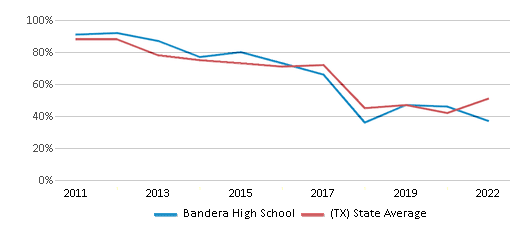
Science Test Scores (% Proficient)
40%
46%

Student : Teacher Ratio
16:1
14:1
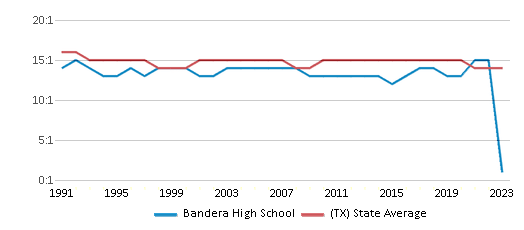
American Indian
n/a
n/a
Asian
n/a
6%

Hispanic
36%
53%
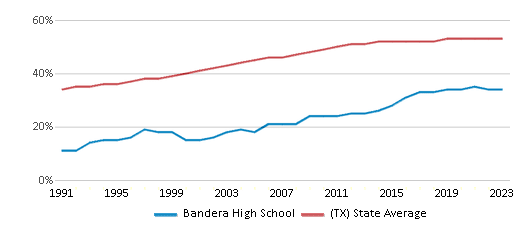
Black
1%
13%
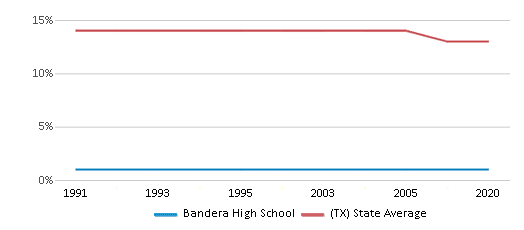
White
60%
25%
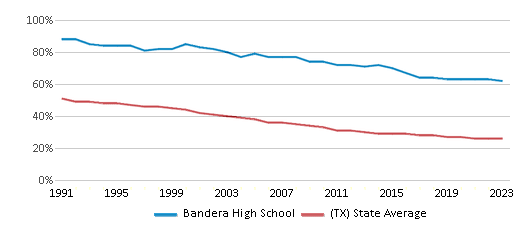
Hawaiian
n/a
n/a
Two or more races
3%
3%
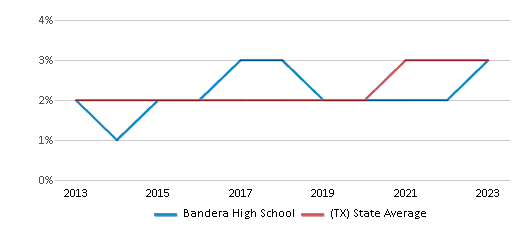
All Ethnic Groups
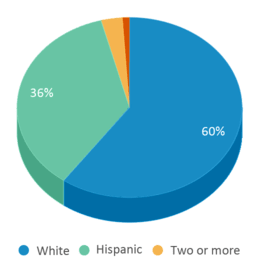
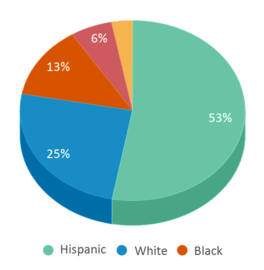

Graduation Rate
85-89%
90%
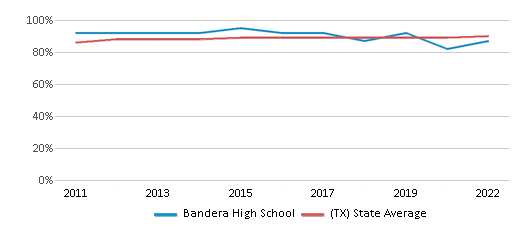
Participates in the National School Lunch Program (NSLP)
Yes
Eligible for Free Lunch
40%
57%
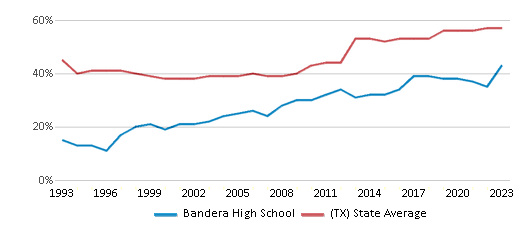
Eligible for Reduced Lunch
5%
5%
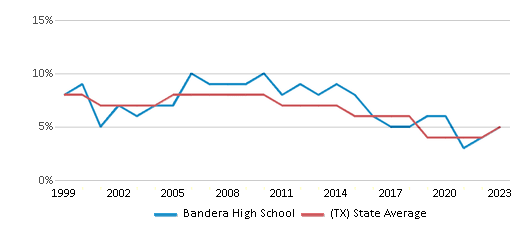
School Statewide Testing
School District Name
Source: National Center for Education Statistics (NCES), TX Dept. of Education
Profile last updated: 02/09/2025
Frequently Asked Questions
What is Bandera High School's ranking?
Bandera High School is ranked #7319 out of 8,188 schools, which ranks it among the bottom 50% of public schools in Texas.
What percent of students have achieved state testing proficiency in math and reading?
15% of students have achieved math proficiency (compared to the 41% TX state average), while 37% of students have achieved reading proficiency (compared to the 51% TX state average).
What is the graduation rate of Bandera High School?
The graduation rate of Bandera High School is 85-89%, which is lower than the Texas state average of 90%.
How many students attend Bandera High School?
710 students attend Bandera High School.
What is the racial composition of the student body?
60% of Bandera High School students are White, 36% of students are Hispanic, 3% of students are Two or more races, and 1% of students are Black.
What is the student:teacher ratio of Bandera High School?
Bandera High School has a student ration of 16:1, which is higher than the Texas state average of 14:1.
What grades does Bandera High School offer ?
Bandera High School offers enrollment in grades 9-12
What school district is Bandera High School part of?
Bandera High School is part of Bandera Independent School District.
School Reviews
1 10/20/2020
This is the worst school ever! There is a teacher at this high school that will do everything in her power to ruin student's success. One time my student was bullied at the school and the High School did nothing about it.. If you want your student to be ruined, this is the school for your child... I recommend that the school hire some good teachers that actually care about their students' success.
2 10/8/2015
Awful school based on who you are not what you do. Teachers have grown up with most of the students parents, therefore giving special treatment to the kids. With the exception of a few teachers most are uncaring and unwilling to help the children if it is an inconvenience to them. Children are bullied an harassed daily while the principle pretends to deal with the problem while it gets swept under the rug. The women in the front office are rude and angry. When getting your child out of school for a family emergency I was prompted to give them a note. I had no idea a death in the family requited a doctors note. Overall awful school no preparation for college, staff is rude and education is sub par.
Review Bandera High School. Reviews should be a few sentences in length. Please include any comments on:
- Quality of academic programs, teachers, and facilities
- Availability of music, art, sports and other extracurricular activities
Recent Articles

What Is A Charter School?
Explore the world of charter schools in this comprehensive guide. Learn about their history, how they operate, and the pros and cons of this educational innovation. Discover key facts about charter schools, including admission policies, demographics, and funding, as well as what to look for when considering a charter school for your child.

10 Reasons Why High School Sports Benefit Students
Discover the 10 compelling reasons why high school sports are beneficial for students. This comprehensive article explores how athletics enhance academic performance, foster personal growth, and develop crucial life skills. From improved fitness and time management to leadership development and community representation, learn why participating in high school sports can be a game-changer for students' overall success and well-being.

February 05, 2025
Understanding the U.S. Department of Education: Structure, Impact, and EvolutionWe explore how the Department of Education shapes American education, from its cabinet-level leadership to its impact on millions of students, written for general audiences seeking clarity on this vital institution.









